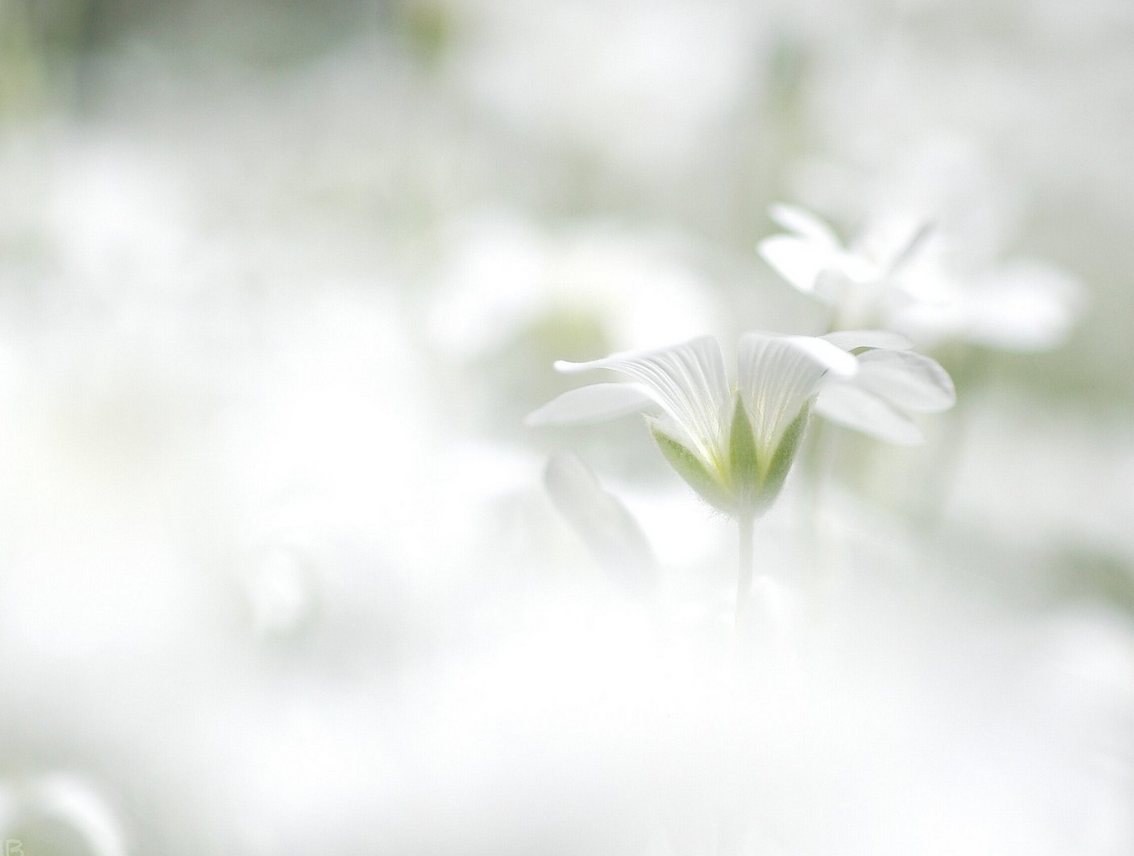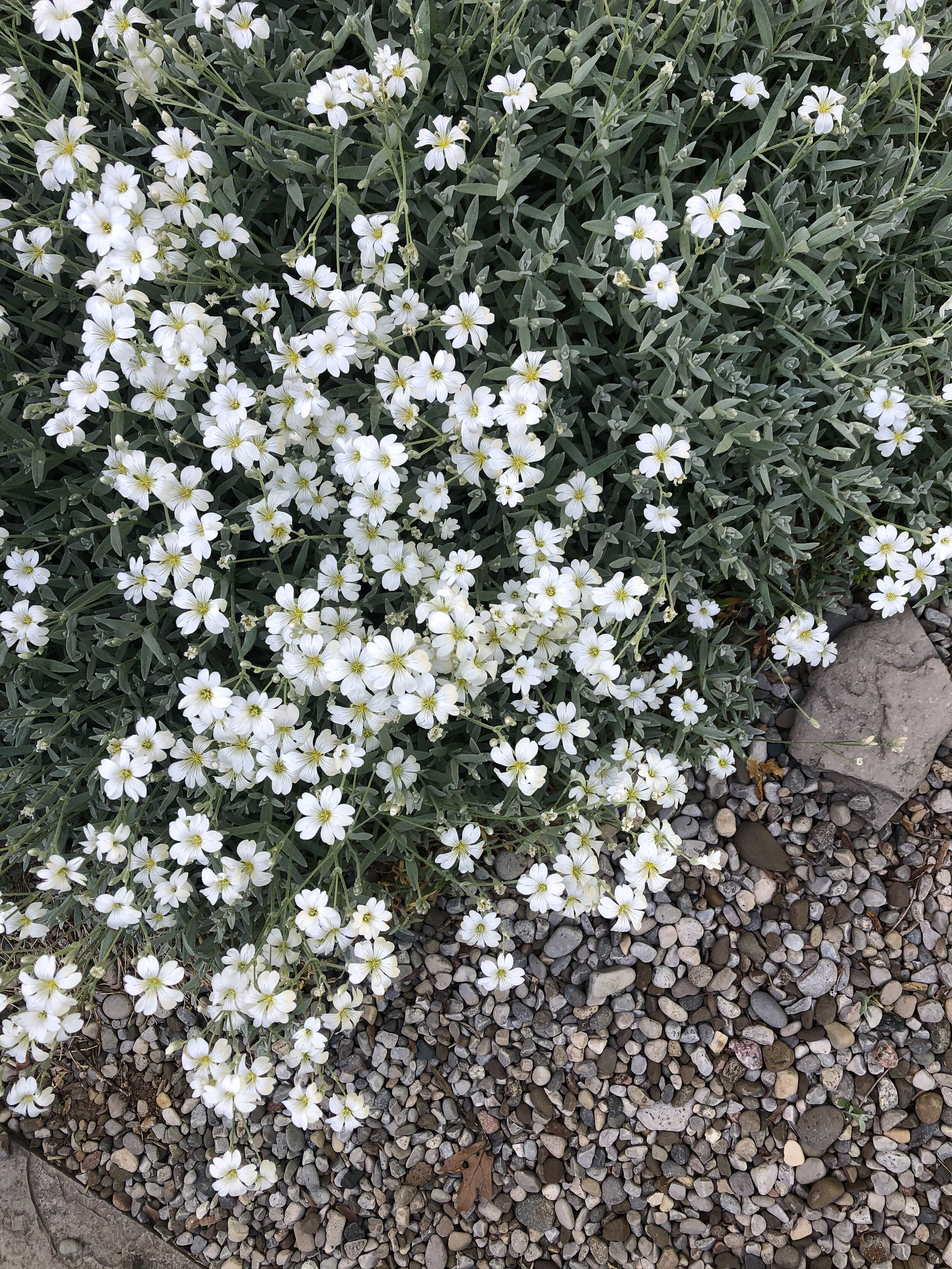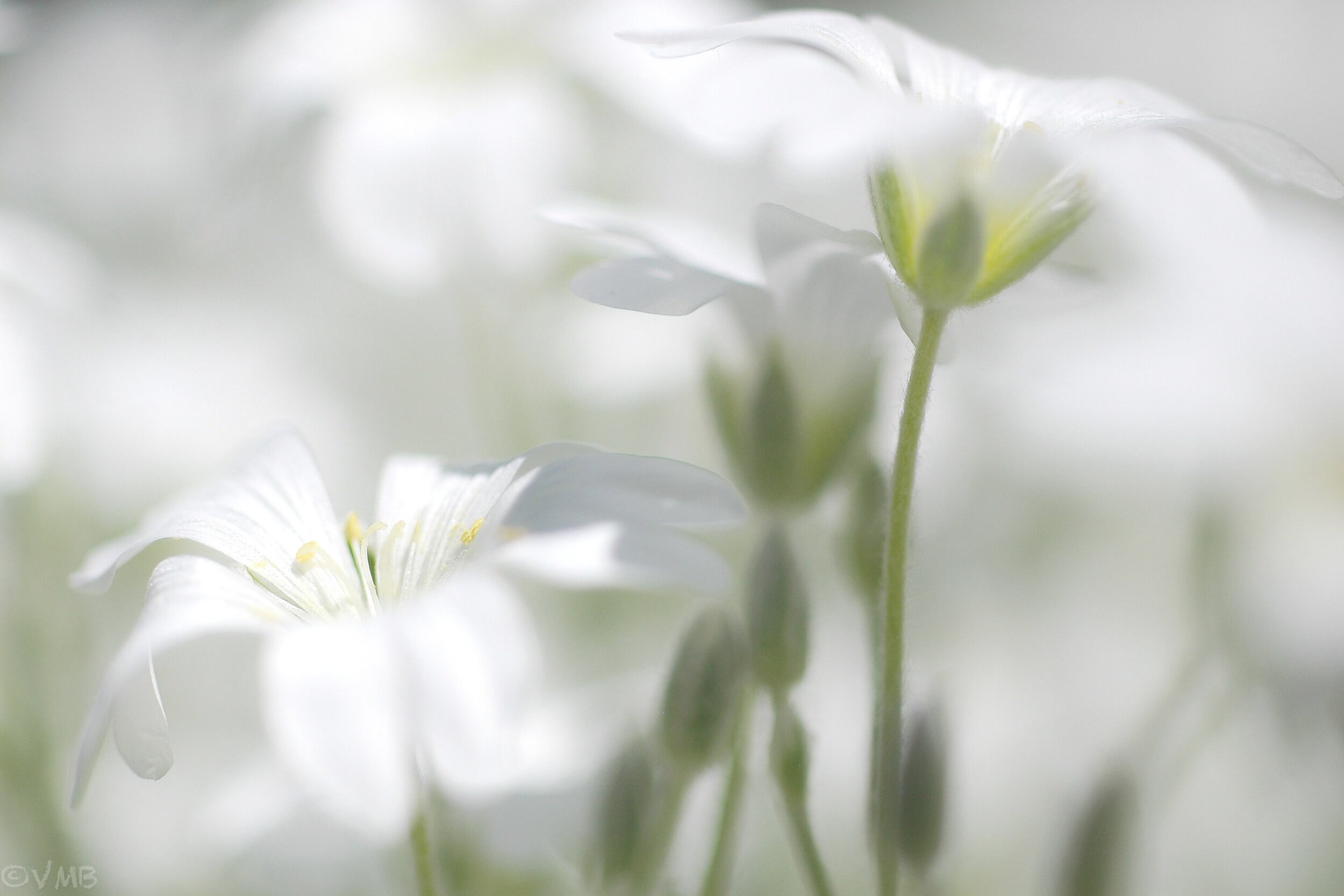How to grow and care for creeping thyme ground cover
Thyme can be a very effective ground cover in a hot sunny dry area where you want to form a low growing dense cover that works like a living mulch.
Ground cover for hot, dry area and on a rock wall
Creeping thyme ground cover is one tough plant that not only withstands foot traffic but practically begs you to walk all over it.
Go ahead tramp on it. Put it between pavers and grow it over the edges of places you normally walk. Not only will you like the feel on your bare feet, chances are you’ll especially love the sweet perfume fragrance that the ground hugging plant gives off.
If you are in bare feet, however, watch those native bees that will be busy buzzing around on this non-native ground cover. Native to northwest Europe, you can expect creeping thyme (Thymus praecox) to grow into a dense mat of about four to six inches tall with the lavender flowers growing just above the foliage.
According to Wikipedia: Thymus praecox is a species of thyme. A common name is mother of thyme, but creeping thyme and wild thyme may be used where Thymus serpyllum, which also shares these names, is not found. It is native to central, southern, and western Europe.
This aromatic ground cover spreads at a very controlled rate of a couple inches a year up to about 24 inches, so if you are looking for a quick cover, plant individual plants 6-8 inches apart.
Use it to connect spaces in your garden. This evergreen ground cover works like a living mulch to shade your soil, suppress weeds and conserve water.
It works nicely as a low-growing border plant as well as in between pavers and in a rock wall. And, it can even be used as a lawn substitute, especially for smaller areas where getting out the lawnmower just doesn’t cut it.
It grows in full sun to partial shade in dry to moderate moisture soils in USDA hardiness zones 3 through nine.
I like to think this excellent ground cover is almost impossible to kill. Plant it in a sunny dry spot with average soil and you should be good to go. But, as noted above, it can take partial shade.
Every couple of years, pull some out and spread it around the garden to enhance another pathway. You can even steal some to pop in a container planting for a couple of months to work its magic in a patio container. In fall, just plug it into the ground in a spot you’ll want to grow it next year.
Our creeping thyme is actually one of the first plants that welcome visitors to our home. We have it growing in the front garden spilling over massive boulders that line the one side of the garden and work as a type of retaining wall.
I remember buying a flat from a local big box store a few years back and tucking it between the rock edges of our new massive boulders and the soil knowing that the warmth of the boulders in spring would give the thyme an early kick start.
And boy was I right.
The thyme has filled in nicely over the years, spilling on to the rock faces and softening their hard edges.
In spring, of course, the thyme is filled with purple flowers that attract the early pollinators and help welcome summer. In time, when the flowers begin to fade, the plants are happy to just sit back and take on an almost mossy look on the rock faces.
Spring or summer, it’s always a joy to take a few seconds to rub the thyme between my fingers and encourage the aroma to waft through the air. The fact that the thyme grows at or above knee height makes it easy to regularly reach down to bring out the scent of the thyme.
There are a variety of thymes to choose from. Some are particularly good as cooking herbs.
Other thymes that you may prefer: Woolly, lemon thyme, and hyssop thyme are examples of thyme varieties that can be used in the garden. Aromatic herbs, like the various thymes, work well with many garden plants in boosting othr plants’ defenses and increasing growth. Try experimenting with various thymes in diffent locations in the garden to see which ones work well.
Looking for more information on ground covers? Please check out my other posts on ground covers I use in the woodland garden.
• Bunchberry perfect ground cover for woodland garden
• Easiest ground covers to grow
• Three great ground covers for the woodland garden.
• Hardy Geraniums as a ground cover
• Snow in summer ideal for hot dry areas
• Moss and moss-like ground covers
Native alternatives to creeping thyme
It’s always better to choose a native plant rather than using a non-native species. While creeping thyme has proven useful in many ways both as a problem solver and a plant that attracts pollinators, there are good native alternatives you might want to consider.
• Wild Strawberry (Fragaria virginiana) like sun, part shade to shade conditions in both dry and moist soils. It is an excellent underused perennial that spreads quickly by runners in sun or shade. It is not considered overly aggressive and struggles to outcompete other plants in the garden. It has tiny white flowers in spring followed by fruit. The fruit is small but is a good food source for native birds and mammals. Wild strawberry attracts native bees, and is though to be a host of at least 75 Lepidoptera caterillars including the gray hairstreak butterfly and grizzled skipper.
• Green-and-gold (Chrysogonum virginianum) will not replace thyme in a hot dry area but it could be a good replacement in a dry shady or part shade area. Pretty yellow flowers bloom against a backdrop of green in the spring into summer. Green-and-gold spreads by rhizomes in optimum conditions which include well-drained soils.
• Eastern Hay-scented fern (Dennstaedtia punctilobula) is another alternative for a shady dry area but it grows tall in comparison to the ground hugging characteristics of creeping thyme.
The perfect ground cover for hot, sunny and dry areas in the garden
Snow-in-summer may not be every gardener’s dream, but if you like your ground covers and enjoy photographing beautiful, ethereal flowers in your garden, this white-flowering, silver foliage plant may be the ideal choice.
Elegant grey foliage, white flowers make snow in summer a great choice for sunny spots
If you are looking for a ground cover for a sunny, hot and dry area, look no further than the grey foliage and lovely white flower of Snow in Summer.
The ground cover affectionately named “snow-in-summer” is a favourite of mine. Its bloom is actually something I really look forward to each year. Snow-in-summer or Cerastium tomentosum is an herbaceous perennial that blooms alongside our wild geranium in early June.
It sits maybe 8-12 inches high and each plant quietly spreads out to form a dense mat of foliage to a width of 12 to 18 inches. Hardy in USDA plant hardiness zones from 3 to 7, this more or less well-behaved, delicate ground cover – a member of the carnation family – is valued for more than just its early summer bloom.
We have ours spilling out over our main garden pathway of pea gravel and blue flagstone where its silver-grey foliage is able to shine year-round. I would say it gets full sun where it is in our garden with some late afternoon shade.
It just loves the hot sun beating on it and reflecting up off the stone. The plants can take foot traffic and never really get out of hand in our garden.
Apparently, if it’s too happy where it is growing, it can become invasive. The combination of reseeding itself and sending out runners can make the plant a little bit of a problem in some areas.
If you are concerned about it running out of control, a 5- or 6-inch deep edge should keep it in check.
It is not particular about the soil it grows in and seems perfectly happy growing into our pea gravel where it is easy to remove and divide.
Here is an added bonus: it’s among the deer resistant family of plants woodland gardeners prize so dearly.
Looking for more information on ground covers? Please check out my other posts on ground covers I use in the woodland garden.
• Bunchberry perfect ground cover for woodland garden
• What is the easiest ground cover to grow?
• Three great ground covers for the woodland garden.
• Creeping thyme as a ground cover
• Moss and moss-like ground covers
Five more great ground covers for sunny areas
Lamb’s Ear (stachys byzantina)
Catmint (Nepeta)
Contoneaster (Contoneaster horizontalis)
Creeping Juniper (Juniperus horizontalis)
Silver Mound Artemisia (Artemisia schmidtiana)
Although this is the only spot in our garden where this plant is growing, I’m noticing that it has jumped over, around or under, our wild geranium and has taken a second spot beneath one of our bird baths along the same pea-gravel path.
That’s fine with us, it can be easily trimmed back before it decides to continue its march elsewhere.
It’s best to divide these plants shortly after flowering, when you are cutting off the spent blooms and tidying it up.
Established plants may be propagated by division in the fall or by cuttings.
Space the snow in summer flower 12 to 24 inches apart to give plenty of room for spread. Mature plants grow to between 6 and 12 inches and have a spread of 12 to 18 inches.
Originally from Europe and western Asia, these plants can actually be pushed to grow in zones 8-10 as well, but growing in these zones they may be short-lived.
The plants silver-grey foliage gives away their overall toughness in the landscape being more or less heat tolerant. They do better in a dry, sunny heat situation rather than in humid conditions.
In fact, we are growing ours in more of a rock-garden style than as a border plant in a traditional garden, where it also excels.
These plants are said to be salt tolerant. If you are lucky enough to live by the sea, give them a try. They can be considered an invasive plant in some warmer climates so check with local authorities before planting.
Photographing these flowers in your garden
Snow in Summer is an excellent plant to experiment with photographically. It’s soft grey foliage and delicate white flowers makes it an ideal candidate to try “selective focus.” This creative style of photography uses a high-key, dreamy effect to create ethereal images.
Using fast, close-focusing lenses that are opened up to as much as f2.8 will create these effects.
Point-and-shoot tip: If you are using a point-and-shoot camera, consider using the “high-key” mode filter, which is usually built into theses cameras, to help you create the light and airy effect.
These “selective focus” images were made in full sunlight with a 50mm f2.8 Pentax macro lens. I used an older manual focus lens but newer auto focus lenses are available. Expect to spend a few dollars on these more specialty lenses.
Also available are 100mm macro lenses that enable photographers more control including a larger working distance to photograph insects and reptiles from farther back.
Many modern zoom lenses also offer a “macro” feature on them. These may work for some flowers, however their close-focusing abilities often fall just short of the mark and they are what we call “slow lenses”, meaning they only open up to f5.6 which is often not enough to give you the amount of out-of-focus effect you are looking for. In certain situations they would work, but if you are serious in pursuing this type of garden photography, consider splurging on a fast macro lens.
There are other ways to get close to flowers and insects in the garden that I’ll explore in later blogs, but trust me when I say true, fast macro lenses are the best way to go, if you want to explore this type of photography.
Macro lens is a good investment
I am lucky enough to own 3 macro lenses. All are older, manual focus lenses that still work on my digital cameras.
In these images, the camera’s settings had to be overridden about two f-stops to maintain the overall lightness of the image. If I had followed the camera meter, the image would have appeared muddy-grey rather than this delicate ethereal look.
Also, opening up the camera lens wide open to f2.8- f4, helps to keep the surrounding flowers completely out-of-focus with a nice dreamy look.
Shooting at f-8 or f16 would have created a sharper more documentary image of the flower, but that was not the look I was after.
Shooting the flowers with the lens wide open and in bright sunlight allowed me to shoot at a fast shutter speed without a tripod. Normally a small inexpensive tripod would be useful in an extreme closeup, but the shutter speed allowed me to shoot handheld.
Besides I don’t think my larger tripods would allow me to get this low to the ground. The situation forced me to lie on the ground and dig the camera into the pea gravel to get the best angles. (What we do to get the shot.)
For more on macro photography in the garden, check out my other posts including: Getting up close for flower and insect photography; Karen Hutton: Exploring the world of close-up photography.
Flowers that grow in profusion like this make for excellent “selective focus” subjects. Take advantage of these situations whenever possible.
Play with the camera settings a little until you get a feel for what works best. Using the camera’s overexposure compensation button is an easy way to change exposure in any camera mode.
These “selective focus” shots are difficult to do with a smart phone without the macro attachments I talked about in the previous blog and linked to here (macro lenses and other accessories.)
The photograph looking down at the plant from above, was taken with an iphone later in the day, after the area was in shade.
Taking this shot at mid-day would have created harsh shadows and likely made the image too contrasty and unuseable. If you must take a more documentary image in full sun, look for a way to shade the flower. White photo umbrellas would work wonderfully in this situation. They allow enough light to get through, yet remove the harsh shadows on the plant.
Once your subject is shaded, then consider using a reflector to bounce light back into the flowers. It could be as simple as a white card or a piece of tinfoil, but these 5 in 1 collapsible photo reflectors give you the flexibility to reflect light into your subjects at various levels and give you the option of reflecting warm, golden light if you are looking for an evening glow on your subject. They are easy to carry around and collapse into quite small, lightweight reflectors.
In my case, most of these accessories were not needed because the light grey pea gravel was able to bounce enough light back up into the flowers to keep that nice light airy feeling.
If the ground was soil or mulch, I would have used one of the collapsible reflectors to bounce the light back up into the plant. Probably the silver reflector would have brought the best results, but the white ones would have also worked well.
Photographing in our own gardens allows us to wait until the perfect times of day to get the best images possible. Keep an eye out for flowers or textures that are in their prime in your garden and try to capitalize on the proximity of your subject and the best light.
This page contains affiliate links. If you purchase a product through one of them, I will receive a commission (at no additional cost to you) I try to only endorse products I have either used, have complete confidence in, or have experience with the manufacturer. Thank you for your support. This blog would not be possible without your continued support.








